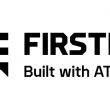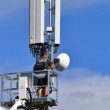Three years after its creation, it is time for FirstNet to begin making key decisions
Dowd said he is pleased with the current direction of FirstNet, particularly with Swenson’s appointment of Jeff Johnson—a FirstNet board member with a public-safety background—as the board’s vice chairman.
Gomez echoed this sentiment, noting that she is eagerly anticipating the release of the draft request for proposal (RFP) by the end of March and a final RFP as early as later this year.
“I really have a lot of confidence in [FirstNet Chairwoman] Sue Swenson and the staff that they have pulled together,” Gomez said. “So, I am pleased with the process, although—like everyone else—I’m anxious to see them start to get the RFPs out and really start deploying the network.”
“The one thing that I’m hoping is that they don’t become so cautious that they … slow the progress of the RFP. I’m anxious to see them move forward and partner with commercial providers in order to get the network deployed as quickly as possible.”
Indeed, the pieces seem to be in place, although the timing may not have been as quick as some would have desired. Any lingering questions about when the $7 billion in funding will be available have been answered, the standards body governing LTE technology has committed to developing public-safety capabilities, and processes for gathering input from all stakeholders—from public-safety officials to vendors—have been established. FirstNet also has a healthy staff to execute plans, although some important hirings remain, such as finding someone to fill its top post.
Now, after getting considerable input and remaining as neutral as possible on all fronts during the past couple of years, it is time for the FirstNet board to begin making decisions about the system design, business model, procurement process and other key strategic components. Such actions may expose FirstNet to criticisms—it is the nature of making choices on significant projects—but they are necessary to make this much-needed communications system a reality.










